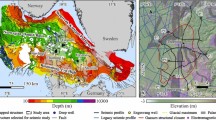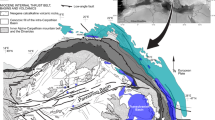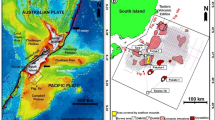Abstract
EXPLORATION for hydrocarbons in the southern North Sea has shown that over a large part of it the Mesozoic rocks are underlain by Upper Permian (Zechstein), containing thick salt layers which have reacted to the overburden load by developing a wide range of halokinetic structures, from salt pillows to diapiric salt plugs1,2. Some of the plugs penetrate the overlying beds to levels high in the Mesozoic and Tertiary rocks, and in some cases approach the level of the sea floor. Seismic profiles show sharp variations in stratal thickness associated with the plugs, commonly indicating a history of movement from at least Lower Jurassic times onwards.
This is a preview of subscription content, access via your institution
Access options
Subscribe to this journal
Receive 51 print issues and online access
$199.00 per year
only $3.90 per issue
Buy this article
- Purchase on SpringerLink
- Instant access to full article PDF
Prices may be subject to local taxes which are calculated during checkout
Similar content being viewed by others
References
Kent, P. E., Proc. Yorks. Geol. Soc., 63, 1 (1967).
Heybroek, P., Hanstraa, U., and Erdman, D. A., Seventh World Pet. Cong. Panel, 9 (11), 223 (1967).
Kent, P. E., Proc. Yorks. Geol. Soc., 29, 2, 117 (1953).
Trusheim, F., Bull. Amer. Assoc. Petrol. Geol., 44, No. 9, 1519 (1960).
Audley-Charles, M. G., Quart. J. Geol. Soc. (in the press).
Greenly, E., Geology of Anglesey (Geol. Survey of Great Britain, 1919).
Bott, M. H. P., Quart. J. Geol. Soc., 120, 369 (1964).
Author information
Authors and Affiliations
Rights and permissions
About this article
Cite this article
BRUNSTROM, R., KENT, P. Origin of the Keuper Salt in Britain. Nature 215, 1474 (1967). https://doi.org/10.1038/2151474a0
Received:
Issue date:
DOI: https://doi.org/10.1038/2151474a0



